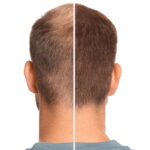Automated window treatments have become immensely popular in the window treatment industry due to their practicality, aesthetic appeal, and energy conservation. These motorized window coverings provide effortless control over privacy, natural light, and the interior environment. However, what further enhances their attractiveness is the capacity to tailor automated shades to suit the seasons, guaranteeing that they offer warmth in the winter and cooling in the summer. This blog will discuss the advantages of modifying automated shades to correspond with the seasons and provide guidance on how to optimize their functionality to ensure a comfortable environment throughout the year.
The Multipurpose Nature of Automated Shades
Smart shades, motorized shades, and automated shades have significantly transformed the way in which individuals engage with window coverings. You can adjust, raise, or lower the position of your shades to suit your particular requirements with the press of a button or a voice command. However, their adaptability transcends mere practicality. Automatic shades have the capability to be personalized in order to optimize comfort and energy efficiency as the seasons evolve.
The Significance of Seasonal Tailoring
Seasonal customization of automated shades is crucial for what reason? The solution can be found in the fluctuating patterns of sunlight and weather that transpire over the course of the year. You can: By modifying your shades to account for these alterations;
1. Maximize Energy Efficiency: In order to optimize energy efficiency, one can tailor the shades to correspond with the seasons, thereby minimizing the ingress of solar heat and natural light during the winter and maximising it during the summer. This can lead to substantial energy conservation through a decreased reliance on heating and cooling systems.
2. Increase Comfort: By customizing indoor environments according to the season, one can maintain a comfortable atmosphere. One can utilize solar energy to generate heat during the winter, and employ insulation to maintain a cooler interior during the summer.
3. Lengthen the Durability of Your Shades: Through strategic utilization, you can mitigate the detrimental effects of prolonged sunlight exposure on furniture and flooring, including fading and damage.
4. Mitigate Glare: Glimptuous daylight angles can contribute to heightened glare levels during particular seasons. As required, customized automated shades can mitigate this issue by regulating glare.
5. Enhance Privacy: Seasonal customization additionally enables one to appreciate natural light while preserving privacy. Particularly critical in areas with dense vegetation or heavy pedestrian activity.
Adapting Automated Shades to the Temperature of Winter
Primarily, during the winter months, the objective is to optimize both warmth and natural light. To customize your automatic shades Leesburg for the winter season, follow these steps:
1. South-Facing Windows: Window panes that face south facilitate natural heating of a dwelling by permitting sunlight to enter during the day. Configure your blinds to become open in the morning and close as the sun sets.
2. North-Facing Windows: To minimize heat loss, ensure that the shades on north-facing windows are closed during the night. Open them in the morning to admit natural light, and then close them as the day begins to cool.
3. Windows Facing East and West: Windows facing east and west are exposed to direct sunlight during particular periods of the day. Attract afternoon sunlight to west-facing windows and block morning sunlight from east-facing windows using your shades.
4. Employ Solar Shades: Designed to diffuse and filter sunlight while preserving views, solar shades should be utilized. In the winter, they are an exceptional option for maximizing the use of natural light and heat.
5. Insulating Drapes or Curtains: When living in extremely cold climates, contemplate the installation of insulating drapes or curtains over your automated shades. This combination provides an additional energy-efficient layer of insulation.
Personalized Automated Shades for Cooling in the Summer
During the summer, maintaining a comfortable and cool home becomes the primary concern. To customize your automated shades for the summer, follow these steps:
1. Prevent Direct Sunlight: Configure your blinds to obstruct direct sunlight exclusively during the peak hours of the day. This reduces the amount of heat that enters the residence, thereby preventing the need for air conditioning.
2. Employ Light-Color Shades: By reflecting sunlight and heat, light-colored shades contribute to the maintenance of a cooler indoor environment. Choose shades in light neutral or white tones.
3. Take into Consideration Blackout Shades: In order to attain absolute darkness and optimize cooling during the summer season, blackout shades constitute an outstanding selection. They obstruct almost all light and heat that enters.
4. Install Automated Exterior Shades: By affixing exterior automated shades to the exterior of your windows, you can effectively obstruct the ingress of solar heat prior to its penetration into your home’s interior.
5. Establish Automated Timetables: Establish automated timetables that correspond to the daily trajectory of the sun. Automatically adjusting to permit or block sunlight in accordance with your preferred cooling strategy.
6. Give Priority to Insulation: Opt for shades that possess insulating properties in order to contribute to the maintenance of consistent indoor temperatures. For instance, cellular or honeycomb shades offer an extra stratum of insulation.
7. Smart Home Integration: The integration of automated shades into a smart home ecosystem is a recommendation. This feature enables users to regulate them in conjunction with other cooling apparatus such as thermostats and fans, thereby providing a holistic approach to temperature control.
Suggestions for Optimizing Seasonal Personalization
To optimize the utilization of your automated shades for the autumn and winter seasons, consider the following supplementary recommendations:
1. Consistently Update Programming: At the onset of each season, revisit and modify your shade programming in order to accommodate fluctuations in temperature and daylight patterns.
2. Indoor Monitoring: Allocate funds towards the acquisition of a smart home system or sensors capable of monitoring indoor humidity and temperature. This information can assist you in optimizing your shade adjustments for enhanced comfort.
3. Shade Maintenance: Ensure that your automated shades are in a pristine state and free from any debris. Consistent maintenance guarantees their efficient and streamlined operation.
4. Take into Account Solar-Powered Shades: Powered by solar energy, these blinds do not require batteries or electrical wiring, which makes them an environmentally conscious option for automation.
5. Seek Professional Guidance: It is advisable to seek professional guidance when uncertain about the most effective approach to customizing automated shades for seasonal usage. It is advisable to consult with a specialist in home automation or window treatments. With their specialized knowledge and assistance, they can optimize the comfort and energy efficiency of your shades, learn more here.
To Conclude,
Seasonally tailoring automated shades is an intelligent and practical way to increase the comfort and energy efficiency of your home. You can provide a more comfortable and environmentally friendly living space by adjusting your shades strategically to maximize cooling in the summer and warmth in the winter. Automated shades provide a flexible solution that adjusts to your specific requirements and the environment, whether you wish to reduce energy costs, enhance comfort, or simply enjoy the convenience of motorized window coverings.





